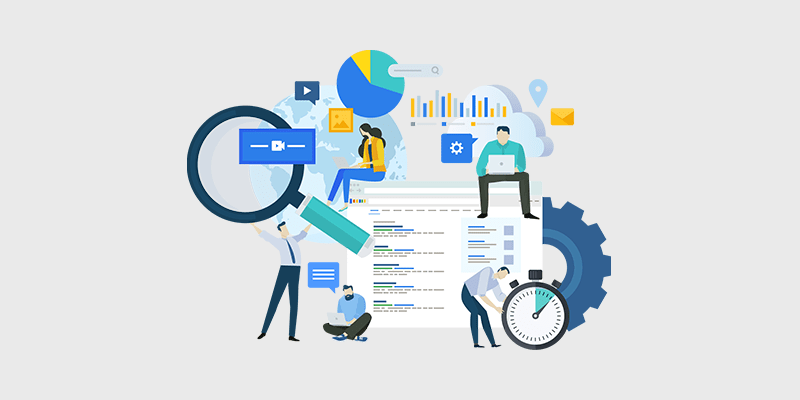
Blogging has evolved far beyond the era of casual journaling. In today’s digital landscape, blogs are powerful marketing tools, brand-builders, and organic traffic magnets. However, content alone is not enough. The unseen infrastructure—the technical foundation of your blog—can make or break your ability to rank. Mastering blog SEO technical tips is essential to ensure that search engines not only discover your content but also prioritize it in results.
Optimize Your Site Architecture
A logical, flat site structure is critical for both users and search engines. Blog posts should be no more than three clicks from the homepage. Categories, tags, and breadcrumbs play vital roles in organizing content and distributing link equity.
Use clean, descriptive URLs like /blog/seo-copywriting-tips/ instead of cluttered query strings. Group related articles under consistent category paths and ensure that pagination doesn’t orphan older posts.
This navigational clarity enhances crawlability—one of the most overlooked blog SEO technical tips—and ensures that Googlebot finds and indexes all relevant content.
Improve Core Web Vitals Performance
Page speed is a ranking factor, but performance goes beyond load time. Google’s Core Web Vitals include Largest Contentful Paint (LCP), First Input Delay (FID), and Cumulative Layout Shift (CLS), all of which impact user experience.
To meet these benchmarks:
- Use a lightweight theme optimized for performance.
- Defer non-critical JavaScript and eliminate render-blocking resources.
- Compress and serve images in next-gen formats like WebP.
- Implement lazy loading for media and iframes.
A fast, responsive blog is favored in SERPs, making this a top-tier item on the list of blog SEO technical tips.
Strengthen Internal Linking Strategy
Every blog post should contribute to your site’s internal ecosystem. Use keyword-rich anchor text to link between related articles, guide users deeper into your content, and signal topic clusters to search engines.
Avoid orphaned content—pages with no internal links pointing to them. Incorporate contextual links naturally within your writing and always link back to cornerstone or evergreen content.
Effective internal linking is one of the most powerful blog SEO technical tips for distributing authority and enhancing content visibility.
Implement Schema Markup
Structured data gives your content context. For blog posts, Article or BlogPosting schema can signal to search engines that your content is newsworthy, educational, or evergreen.
Include elements such as:
- headline
- author
- datePublished
- image
- publisher
If your blog includes reviews, FAQs, or how-tos, use the respective markup (Review, FAQPage, HowTo) to qualify for rich results.
These microdata enhancements are underutilized blog SEO technical tips that significantly boost SERP visibility.
Optimize for Mobile-First Indexing
Google evaluates the mobile version of your site before the desktop. Ensure your blog renders flawlessly on smartphones and tablets.
Use responsive design—not separate mobile URLs. Avoid intrusive interstitials, maintain legible fonts, and keep buttons and links easily tappable. Content on mobile should mirror desktop in quality and quantity.
Mobile usability is no longer a luxury—it’s foundational in blog SEO technical tips for modern optimization.
Manage Tags and Categories Intelligently
Overuse of tags and poorly structured category systems can confuse crawlers and dilute relevance. Each tag and category page should serve a unique purpose and contain original content or summaries.
Avoid creating hundreds of thin tag pages that repeat the same content. Use canonical tags to prevent duplicate issues and ensure your taxonomy enhances—not hinders—SEO.
An organized taxonomy system is one of the most underrated blog SEO technical tips that preserves site health and clarity.
Secure Your Blog with HTTPS
Security is not just about protecting user data—it’s also a trust signal. Sites with HTTPS are prioritized over non-secure sites in search results. If your blog still runs on HTTP, install an SSL certificate and redirect all traffic to the secure version.
Update internal links, canonical URLs, and sitemaps accordingly. In the era of digital trust, this is a baseline requirement in every set of blog SEO technical tips.
Control Crawl Budget and Indexation
Not every page on your blog needs to be crawled or indexed. Use the noindex directive on thank-you pages, tag pages (if thin), and admin pages. Ensure your robots.txt is clean and doesn’t block essential assets like CSS or JS.
Submit your sitemap to Google Search Console and keep it updated. Monitor crawl stats and fix crawl errors promptly. Intelligent indexing is among the sharpest blog SEO technical tips for resource-efficient visibility.
Use Canonical Tags to Prevent Duplication
Canonical tags tell search engines which version of a page is preferred when similar or duplicate content exists. This is especially important for blogs with pagination, printer-friendly versions, or syndication.
Ensure each post has a self-referencing canonical tag and avoid unnecessary content duplication across categories or archives.
Accurate canonicalization preserves your SEO authority—a precision tactic among blog SEO technical tips.
Monitor and Maintain SEO Health
Technical SEO is not a one-time affair. Use tools like Google Search Console, Screaming Frog, and Ahrefs to regularly audit your blog. Check for broken links, duplicate titles, meta issues, and slow-loading pages.
Set alerts for indexing anomalies and stay updated with algorithm changes. Continuous improvement is the hallmark of a technically sound blog.
Routine audits are non-negotiable in the realm of blog SEO technical tips.Optimizing a blog for search engines requires more than compelling prose. It demands a fortified technical backbone that enhances accessibility, performance, and discoverability. By integrating clean site architecture, structured data, mobile responsiveness, and ongoing audits, blogs can achieve sustainable growth in organic traffic.
The most successful content isn’t just well-written—it’s technically impeccable. These blog SEO technical tips form the invisible engine driving that success.


